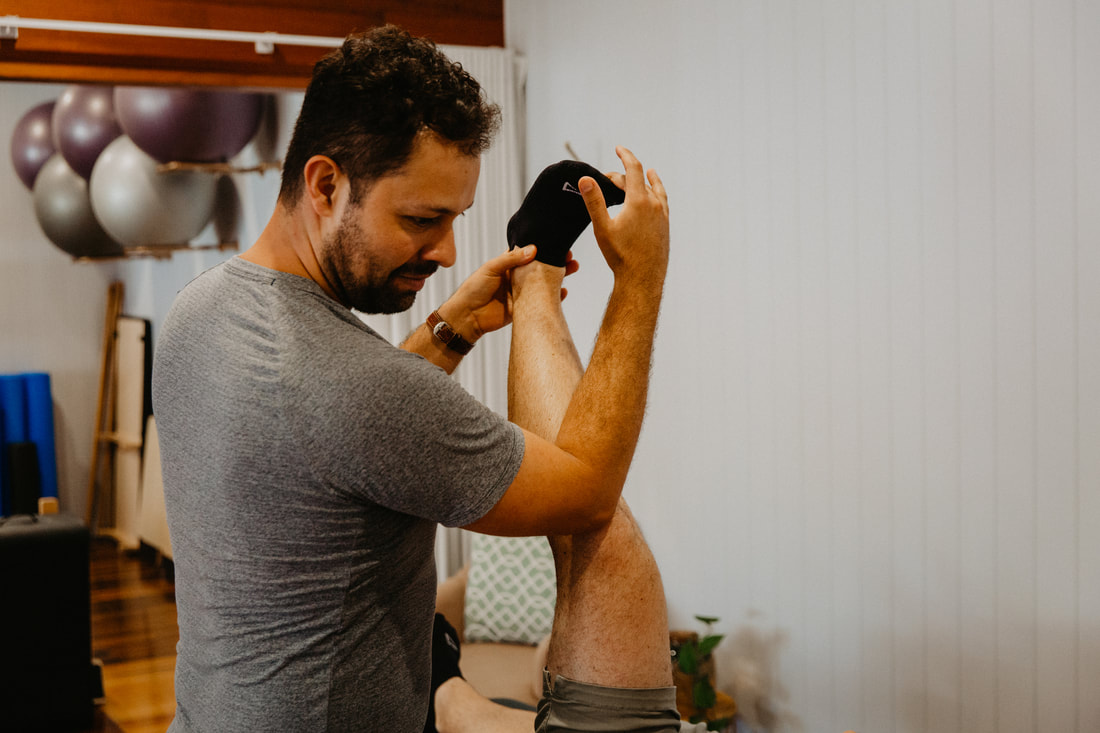Hamstring Injuries Physiotherapy Brisbane southside.
What are Hamstring Injuries?
Hamstring injuries are common injury, especially among athletes and involve a strain or tear in the three hamstring muscles located at the back of the thigh. These injuries are prevalent in activities that involve sprinting, jumping, or sudden starts and stops. Depending on the severity, they can be classified as:
Hamstring injury also vary be the location of the strain as the muscle is quite long: proximal just under the buttock, mid-portion of muscle belly or musculo-tendinous junction in the lower one-third of the thigh.
What Causes Hamstring Injuries?
Several factors can contribute to hamstring injuries:
How are Hamstring Injuries Diagnosed?
The process typically involves:
How can Physiotherapy Help with Hamstring Injuries?
Physiotherapy plays a crucial role in the recovery process:
How can Clinical Pilates Help with Hamstring Injuries Rehabilitation?
Clinical Pilates provides a holistic approach:
What is the Prognosis for Hamstring Injuries?
The prognosis largely depends on the injury's severity:
Tips for Preventing Hamstring Injuries:
Hamstring injuries can be a setback, but with the right approach, you can bounce back stronger. Our physiotherapy team is here to guide you every step of the way, employing evidence-based practices to facilitate your recovery. Together, let's work towards restoring your strength, flexibility, and confidence.
No matter how big or small our top tip with sprains and strains is to book in quickly and don't let a small problem become a big problem! Call us on 07 3706 3407 or email [email protected] if you want to see one of our Tarragindi and Coorparoo Physiotherapists!
Hamstring injuries are common injury, especially among athletes and involve a strain or tear in the three hamstring muscles located at the back of the thigh. These injuries are prevalent in activities that involve sprinting, jumping, or sudden starts and stops. Depending on the severity, they can be classified as:
- Grade 1: Mild muscle strain or pull.
- Grade 2: Partial muscle tear.
- Grade 3: Complete muscle tear.
Hamstring injury also vary be the location of the strain as the muscle is quite long: proximal just under the buttock, mid-portion of muscle belly or musculo-tendinous junction in the lower one-third of the thigh.
What Causes Hamstring Injuries?
Several factors can contribute to hamstring injuries:
- Overexertion: Pushing muscles beyond their limit during activities.
- Tightness: inadequately increased muscle tone
- Imbalance: When the muscles at the front of the thigh (quadriceps) are stronger than the hamstrings, there's an increased injury risk.
- Previous Injury: A prior hamstring injury increases the risk of subsequent injuries if not properly rehabilitated.
How are Hamstring Injuries Diagnosed?
The process typically involves:
- Clinical Evaluation: Discussing the injury's circumstances, pain levels, and any related symptoms.
- Physical Examination: Evaluating swelling, bruising, and the muscle's strength and flexibility.
- Imaging Tests: MRI or ultrasound may be recommended to determine the injury's severity but often not necessary in the lighter strains.
How can Physiotherapy Help with Hamstring Injuries?
Physiotherapy plays a crucial role in the recovery process:
- Pain Management: Techniques like ice or electrotherapy can help alleviate pain.
- Manual Therapy: Gentle mobilisation to improve joint and muscle function.
- Exercise Therapy: Gradual strength and flexibility training is crucial to restore muscle function.
- Education: Offering advice on safe movement and preventing reinjury.
How can Clinical Pilates Help with Hamstring Injuries Rehabilitation?
Clinical Pilates provides a holistic approach:
- Core Strengthening: A robust core helps support the lower body, reducing hamstring strain.
- Muscle Balance: Pilates focuses on balancing muscle strength and flexibility across all myofascial chains, reducing injury risk.
- Tailored Exercises: Specific movements can target hamstring strength and flexibility.
- Functional Movement Training: Enhancing movement patterns to support daily activities and sports.
What is the Prognosis for Hamstring Injuries?
The prognosis largely depends on the injury's severity:
- Grade 1: Recovery usually takes a few days to a couple of weeks with adequate rest and physiotherapy.
- Grade 2: A partial tear may take several weeks to a couple of months to heal fully.
- Grade 3: Severe injuries may require surgical intervention and extensive rehabilitation, spanning several months.
Tips for Preventing Hamstring Injuries:
- Engage in regular stretching and warm-up before activities.
- Strengthen your hamstrings and core muscles.
- Listen to your body; rest and recover when needed.
- Gradually increase the intensity of your workouts.
Hamstring injuries can be a setback, but with the right approach, you can bounce back stronger. Our physiotherapy team is here to guide you every step of the way, employing evidence-based practices to facilitate your recovery. Together, let's work towards restoring your strength, flexibility, and confidence.
No matter how big or small our top tip with sprains and strains is to book in quickly and don't let a small problem become a big problem! Call us on 07 3706 3407 or email [email protected] if you want to see one of our Tarragindi and Coorparoo Physiotherapists!
Who to book in with:
Yulia Khasyanova
|
Monica Hanna
|
Emma Cameron
|



